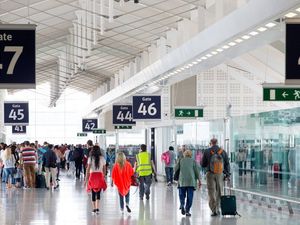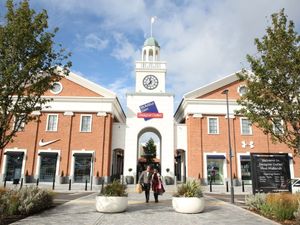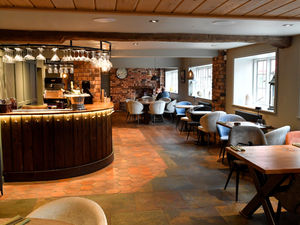Woolworths: The dying giant that set off a decade of High Street turmoil
The failure of any business is always a sad occasion. But when the shutters finally came down on the last Woolworths stores a decade ago this weekend, it was much more than that.
Staff wept, the nation mourned. Retail chains come, and retail chains go, but Woolworth's was different.
The chain's brash red-and-cream fronted shops had been with us for almost a century, and held a treasure trove of precious memories.
It was the shop where youngsters bought their first record – probably on its own Pickwick label, it was where they went with their friends to devour the pick 'n' mix counter.
Its star-studded Christmas ads were as much part of the 1970s festive television schedules as Mike Yarwood and Morecambe & Wise.
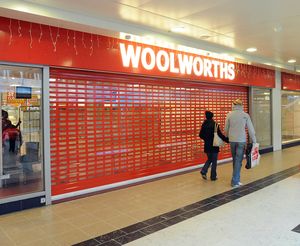
Woolworths finally disappeared from the high street on January 6, 2009, although the majority of the stores had closed some days earlier.
The Bridgnorth branch was one of the last, having actually been due to shut on January 5, but administrators decided to give it a 24-hour reprieve so the remaining stock could be sold.
There was not much left on the final day of trading, but discounts of 70 per cent meant there were still plenty of people prepared to have a rummage around.
And everything, right down to the shelves, chairs and fittings were up for grabs.
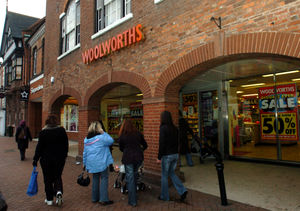
Team leader Chris Batham said: "There are a select few bargains but we have limited stock left. The atmosphere is not too bad, but I am sad, and it can only get worse."
But the demise of Woolworths not only marked the end of an era in our towns and cities, it also marked the beginning of a decade of turmoil on Britain's high streets.
The past 10 years have marked the loss of some of the most famous and venerable names on the high street, including Comet and BHS, as well as more recent – but still significant – players such as Blockbuster, Maplin, and Toys R Us. Only last week, music giant HMV – established in 1921 – became the latest casualty.
The message from Woolworths' collapse was clear – no business was too big, too old, or too close to the hearts of the British public to fail.
Doreen Collins said she had spent some of the happiest years of her life working at the chain's shop at Bilston in the Black Country.
“If you got bitten by the Woolworths bug that was it, you were bitten for life," she said at the time of the business's collapse.
"Some people left but they would always go back. It was a real family."
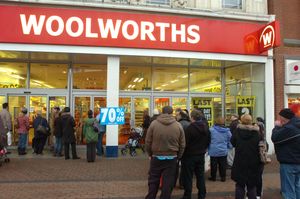
Indeed, Mrs Collins, who worked at the store from 1949 to 1962, owed her very existence to Woolworths: her mother May met her father at the Dudley branch in 1919.
“She worked on the tea bar. It was there where she met my father who had been a prisoner of the First World War, which had just ended,” she says.
“He was only eight-and-a-half stone, and had been treated badly in the camp. He went to the counter and asked for a cup of tea with three sugars.
“As rationing was still on, my mum explained this to him, after seeing how thin and pale he was, she felt sorry for him and put some of her own sugar in for him.
“He waited for her when she came out and saw her home on the bus. This was the start of a relationship which led to marriage and two children.”
Woolworths originated in the United states in 1878, but its founder Frank Winfield Woolworth decided to expand into the UK market after visiting what is now Stoke-on-Trent to buy supplies.
The brand has also disappeared from the US, but there are still branches in some European countries.
As well as the loss of a much-loved brand, the collapse of Woolworths in the UK also left a huge gaping hole in more than 800 high streets across the country some of which have not been filled to this day.
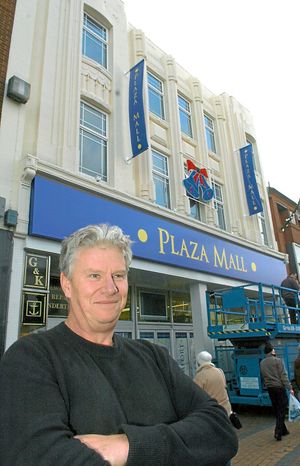
Some, such as the branches in Stourbridge and Oswestry, were taken over by Home Bargains, which was in many ways the successor to Woolworths, even to the point of stocking Woolworths-branded stock after the collapse.
The Bridgnorth store was taken over in June 2009 by The Factory Shop, which described itself as 'like Woolworths, only more so, and the Newport branch became a B&M store, which again caters for a similar market.
The Walsall and Telford stores are now occupied by Poundland, with the Walsall branch briefly being used by discount department chain T J Hughes. Shrewsbury's store was taken over by fashion chain H & M.
The art deco store in Dudley market place was converted into the Plaza Mall shopping centre, opening in November 2009, but the Wolverhampton branch took much longer to fill.
The branch, in the Mander Centre, was once the biggest Woolworths in the country, but the upper level, fronting Dudley Street, was taken over by Boots in the mid-1980s. In October 2012, almost four years after Woolworths plunged into administration, the unit was reopened as a branch of budget retailer Discount UK.
At least these shops have been found new uses, though. Woolworth's Kidderminster branch is still empty 10 years on. Hopes rose in February 2016 when the building in Worcester Street was sold at auction, but almost three years on there has been little clue as to what the new owner plans to do with it.
There were attempts to revive Woolworths. In a blaze of publicity, former Dorchester branch manager Claire Robertson relaunched her store as Wellworths, with DJ Chris Evans performing the opening ceremony. But despite some initial success, it closed its doors in 2012. Former Woolworths executive Andy Latham reopened 18 shops under the Alworths name – the first two letters being his initials – but after 16 months the venture went into administration.
The Woolworths name itself was bought by the Shop Direct Group, but attempts to relaunch it as an internet brand also failed, and the online Woolworths was dissolved in 2015.
There has been sporadic speculation that former Woolworths boss Tony Page planned to buy the brand to relaunch the chain, but it has so far come to nothing.
But the fact that people even talk about this tells us something about enduring legacy of the popular, if slightly chaotic, department store.
The wonder of Woolies lives on.

